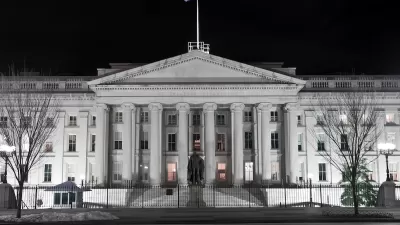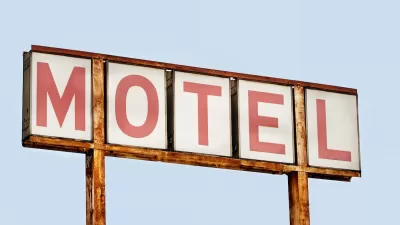Urban planners should take a leadership role in placing social equity at the top of planning goals, argues planner, teacher, and affordable housing developer Murtaza Baxamusa. He looks at five socio-economic problems planners should strive to solve.

Planners should embrace their unique ability to influence socio-economic issues and they should advocate for promoting social equity in the planning process, argues Murtaza Baxamusa, a San Diego based planner and affordable housing developer. He cites Norman Krumholz, a leading advocate of equity planning, to suggest that planners have been too "timid" in promoting social equity in urban planning. He states:
To be effective, urban planning needs to dig deeper than obscure code, pretty pictures and jumbling data. It needs to make a difference in the lives of all people. With respect to the defining issues mentioned above, here are five fundamental socio-economic problems that urban planners face:
1) Can cities and regions prosper more fairly?
2) Is the "affordable" housing crisis in desirable places solvable?
3) Are our cities prepared for significant demographic and cultural changes in the future?
4) Should urban plans and projects be scrutinized for public health impacts?
5) Should transportation planning reorient from cars to people?
Baxamusa describes the need in each of these five areas for planner involvement.
FULL STORY: Urban planning without social equity is like playing chess without the queen.

Study: Maui’s Plan to Convert Vacation Rentals to Long-Term Housing Could Cause Nearly $1 Billion Economic Loss
The plan would reduce visitor accommodation by 25,% resulting in 1,900 jobs lost.

North Texas Transit Leaders Tout Benefits of TOD for Growing Region
At a summit focused on transit-oriented development, policymakers discussed how North Texas’ expanded light rail system can serve as a tool for economic growth.

Why Should We Subsidize Public Transportation?
Many public transit agencies face financial stress due to rising costs, declining fare revenue, and declining subsidies. Transit advocates must provide a strong business case for increasing public transit funding.

How to Make US Trains Faster
Changes to boarding platforms and a switch to electric trains could improve U.S. passenger rail service without the added cost of high-speed rail.

Columbia’s Revitalized ‘Loop’ Is a Hub for Local Entrepreneurs
A focus on small businesses is helping a commercial corridor in Columbia, Missouri thrive.

Invasive Insect Threatens Minnesota’s Ash Forests
The Emerald Ash Borer is a rapidly spreading invasive pest threatening Minnesota’s ash trees, and homeowners are encouraged to plant diverse replacement species, avoid moving ash firewood, and monitor for signs of infestation.
Urban Design for Planners 1: Software Tools
This six-course series explores essential urban design concepts using open source software and equips planners with the tools they need to participate fully in the urban design process.
Planning for Universal Design
Learn the tools for implementing Universal Design in planning regulations.
Ascent Environmental
Borough of Carlisle
Institute for Housing and Urban Development Studies (IHS)
City of Grandview
Harvard GSD Executive Education
Toledo-Lucas County Plan Commissions
Salt Lake City
NYU Wagner Graduate School of Public Service





























